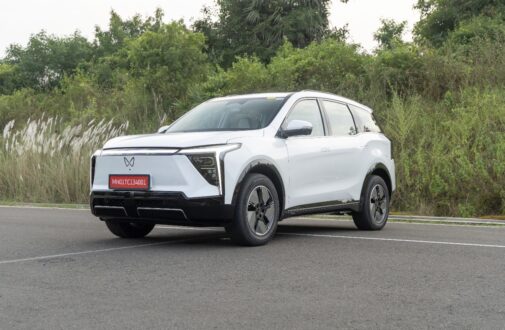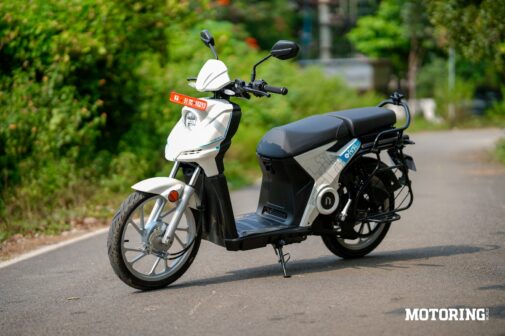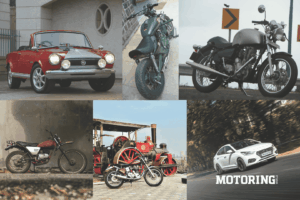The thing about Skoda is that its illustrious past often gets underwhelmed by the lack of popularity. But on the other hand, the VW-owned Czech carmaker also happens to have a strong Indian connection. And it all became the strongest when the gen-1 Skoda Octavia was launched in the market. Not only did it spearhead the D-segment of saloons, it also proved that front-wheel drive cars can be fun-to-drive. Along with the regular model came the hotter, more focussed Skoda Octavia vRS, which further reaffirmed its driver-orientated stance. And it’s also the topic for us today, because not only has Skoda announced the revival of the ‘Octavia RS’ in India, it’s also set to be launched in a matter of few weeks. More on that and the other two new cars — the Skoda Kodiaq SUV and Rapid Monte Carlo edition — below:
But first, let’s talk about the Skoda Octavia vRS. First things first, unlike in the past wherein the vRS shared identical underpinnings (remember the Laura RS?), the all-new Octavia vRS gets a more powerful/larger 2-litre petrol engine, an electronic limited slip differential, in addition to sporting styling and a stiffer suspension. Also exclusively available on the RS are bits like the boot spoiler, stainless steel exhaust tips, red reflector strip on the bumper, etc.
Globally there are three power- and drivetrain choices: a 226-bhp 2-litre TSI (4×2; 6-speed MT/AT), a 181-bhp 2-litre TDI (4×2; 6-speed MT/AT), and a 181-bhp 2-litre TDI (4×4; 6-speed AT). Skoda officials remained mum on further details, but it’s the 2-litre TSI most likely to be making it to the Indian market. Which is a good thing, because with 35.7 kgm, the petrol-engined Octavia RS manages to do nought to a hundred in 6.7 seconds, and has a top-speed of 250 kph.
And it doesn’t just end there, either. On the inside, while the RS shares most of the cabin with the regular version, there’s a lot to differentiate — like sports seats, a flat-bottomed steering wheel, RS-badged bits (seats, gear-knob, door sills, and even the instrument panel), use of Alcantara, heated steering wheel, and even a lap timer. Top-class safety features list include a plethora of driving assists. Like the regular car, it also offers loads of interior space, a huge 590-litre boot, large touchscreen infotainment system complete with a multitude of connectivity choices.
More details about the car will be available later this month when the car is launched. It would be interesting to see how Skoda prices it, because with MQB underpinnings and a larger engine, the RS looks like a better choice on paper in comparison to the other performance VW, the Polo-based Volkswagen GTI.
That is all about the Skoda Octavia. Off to the other saloon announced today: the Rapid Monte Carlo. Skoda has been making Monte Carlo editions of its popular cars in markets globally, and it’s the first time the Indian version of the Rapid will be offered with the same. Why Monte Carlo? Because Skoda had, back in the day, won the fabled rally; also, so you know, the company has been active in motorsports for a total of 116 years — beat that!
Back to the Skoda Rapid Monte Carlo. While it won’t be a mechanically altered car — so don’t get your hopes high — the Rapid will get a lot of aesthetic updates with the special edition. To be available in red, it will come with contrasting black-painted parts, a new flat-bottomed steering, aluminium pedals, etc. Like the Octavia, the Rapid Monte Carlo will be launched this month.
But the car you’ll have to wait for a little longer is the Skoda Kodiaq. The seven-seat SUV will also be made available later this year, with a choice of petrol and diesel engines, AWD system, and a lot of features. The list of which is topped by a multi-camera aerial view of the car on the large touchscreen infotainment screen. The latter also offers Skoda’s online array of infotainment and other services. There’s also a Skoda Connect application if you fancy remote access to your SUV, and a neat emergency call button, should things go wrong.
At 4.69 metres in length, the Kodiaq also offers versatile seating — with up to 2,005 litres of boot space. Off-road enthusiasts will appreciate its 23.1-degree approach angle, 23.1-degree departure angle, a ramp-breakover angle of 19.7 degrees, and a ground clearance of 194 mm. There are driving modes that vary the vehicle’s characteristics (both engine mapping and damper stiffness), a wide range of driver aids, and a lot of space for the passengers, too, courtesy of the 2.79-metre wheelbase.
Apart from that, the Skoda Kodiaq also gets the very innovative door-edge protectors (something we badly need in India), a pair of brollies, an ice-scraper (Ladakh trip, anyone), a rechargeable torch, an iPad mount for the rear seats, etc.
That’s good enough for making a mark in the SUV segment, isn’t it! We’ll get to know more once the Kodiaq reaches the dealerships later this year. But before that it’s the 226 bhp Skoda Octavia vRS waiting to be driven sometime later this month.
Cannot wait.



















